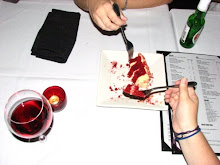In his book, Remaking America: Public Memory, Commemoration, and Patriotism in the Twentieth Century, John Bodnar explores America's public memory and the varied interests that seek to control this memory. For Bodnar, ultimately public memory is a reconciliation between vernacular and official cultural expressions. Vernacular expressions are the ethnic, local, and ordinary acts made by usually a small group and are often dominated by those who support official acts of expression. Official on the other hand, deal mainly with the support of the nation-state and place emphasis on that which supports American memory rather than individual ethnic memories.
One of his more interesting chapters was Bodnar's discussion of ethnic communities. He seeks to explore how ethnic communities, such as Norwegians in the Midwest and Mennonites in Kansas were able to reconcile their vernacular memories with their official memories. Before World War I, the Norwegian community chose a public memory that focused mostly on their personal pioneers, i.e. the first generation to come to America. These people were seen as contributing more to the Norwegian identity than George Washington, a leader within American public memory. After World War I however, Norwegians felt the need to emphasize their devotion to the United States and therefore placed great importance on events that tied both vernacular and official expressions together. Commemorations such as the centennial anniversary of the Restaurationen in which many Norwegians first came to the United States, showed other Americans their commitment to the official memory and legitimized their vernacular memory. For Bodnar, although ethnic memory still remained important, over time it was accepted only once patriotic memory stood above memories and objects from the “motherland.”
Overall I believe Bodnar did a good job explaining America's struggle to reconcile vernacular and official memory. The only complaint I had about the reading was that it was a bit dry and therefore hard to really get into and understand. Bodnar's writing style was not my favorite and did not seem to bring this struggle to life for me. Ultimately however, Bodnar supports his argument well and convincingly shows that public memory is much more complicated than originally thought. This memory can come at a price often paid by ordinary citizens and often results in ethnic culture being placed behind national memory.
Subscribe to:
Post Comments (Atom)

4 comments:
I also found Bodnar's chapter on ethnic communities the most insightful. It was interesting to see how rural and urban ethnic groups differed in commemorative practices, and how their commemorations influenced locals not affiliated with that ethnicity. The issue of consent versus descent presented a dynamic in commemoration that I never really thought of. Who do you commemorate when your ancestry is traced to another country?
I also found it difficult to read Bodnar's argument after his chapter on ethnic communities. His writing style was hard to understand at times, especially when he used "the former" and "the later" to distinguish the subject of a sentence or idea. I also felt he was repetitive in expressing the influence of patriotism in commemoration. In every introduction of each chapter, he would argue again how ordinary people and officials view patriotism differently. I guess he was trying to get his point across and repitition was the only way to burn it into the reader's head.
I too thought Bodnar's discussion of increased patiotism in ethnic communities after WWI was interesting. Another point he raised in this discussion that I thoght was interesting was that the increase in national public memory was linked to an increase in time from the pioneer generation. It makes sense that the less direct ties the later generations had to their pioneer ancestors would help to increase their connection to national public memory isntead. Of course, Bodnar also points out that officials' still used their ethnic memory to tie into the greater national memory by tapping into the theme of progress and success through perseverence. He makes some interesting arguments, but I have to agree his writing is very dry and very hard to keep up with and follow.
I too found the chapter on ethnicities the most interesting. It really showed the transition from vernacular to official and the role that the government plays in playing up patriotism. It was interesting to see how ethnicities transformed and assimilated into the American patriotic form.
I would also agree that Bodnar was repetitive and difficult to read. Perhaps this has something to do with his social history background, or perhaps he's just not a great writer. It seemed as though sometimes he had one argument and sought to drive it home through each page and chapter.
I agree, I thought the chapter discussing ethnic communities was one of the more interesting. It definitely did a good job of presenting Bodnar's belief that vernacular and official memories establishes our public memory. Plus, it was interesting! Because, I also have to agree that his writing was not as engaging as perhaps maybe it could have been, which is unfortunate because I think the topic of public memory and commemoration is really interesting.
Post a Comment